
Is it possible to have too much of a good thing? Can it really snow too much? What is too much snow?
These are questions that skiers and boarders often ponder on lift chairs or over a beer. If you live in a big city then a couple of inches is too much. It makes traffic come to a crawl, sidewalks become impassible and in 24 hours the once pristine, fluffy white magic is now a shade between dog piss and grey. Ugh!! I personally think there can never be enough snow as long as I’m not driving in it.
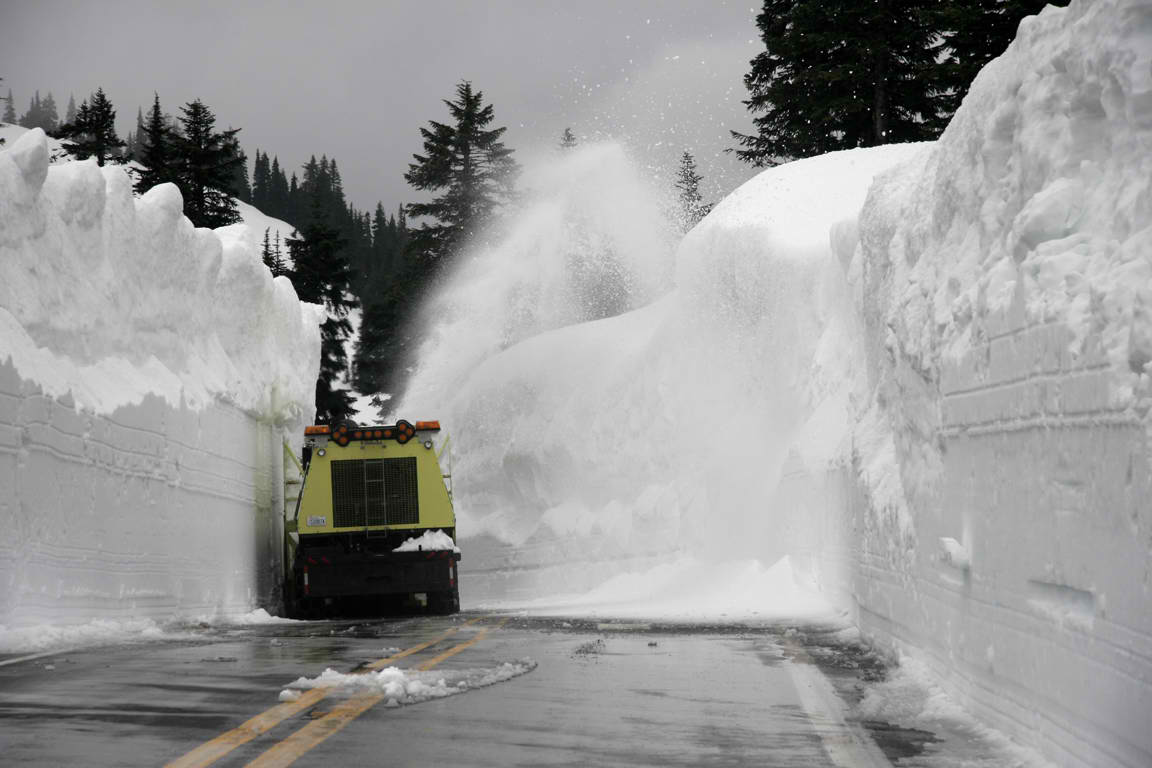
Well, let’s take a look at some really big snow events over the years in North America and the rest of the world:
1,224.5″ in a year – Mount Rainier National Park, WA:
The Pacific Northwest region of North America, which includes Alaska, British Columbia, Washington, and Oregon, is the snowiest region of the continent. In many areas of Alaska and British Columbia, there are no meteorological stations, so we can only imagine how much falls during a given season. In Mount Rainier National Park, at the Paradise Ranger Station, 1,224.5 inches (102 feet) of snow fell between February 19, 1971, and February 18, 1972. That is equal to the height of a 10-story building.

1,140″ in a season – Mt. Baker Ski Area, WA:
Most skiers know about the phenomenal snow year of 1998-1999 in Washington state’s Mt Baker ski area. 1,140 inches (95 feet) of snow fell to the ground over the course of the ski season. That amount of snow would cover the White House by 25 feet. As we shall see, that was far from an isolated event.
974.1″ in a winter – Thompson Pass, AK:
Thompson Pass enjoyed or suffered through, depending on your opinion, a great or horrific year in the winter of 1952-1953. That’s when 974.1 inches (81 feet) fell from heaven. What does 81 feet of snow look like? Well, take a 73-foot tractor-trailer combo, which blasts down interstate 90 at 75 miles an hour, stand it on its end, and it would be under 8 feet of snow.

728″ in a season – Squaw Valley, CA:
The 2016/2017 ski season gave us record-breaking snowfall totals. They called it SNOWMAGEDDON, Janu-BURIED, Febru-BURIED, Miracle March, Awesome April, May Madness, and even June & July blew everybody’s minds. Many resorts extended their seasons. Squaw Valley stayed open past the 4th of July for the first time in their history.
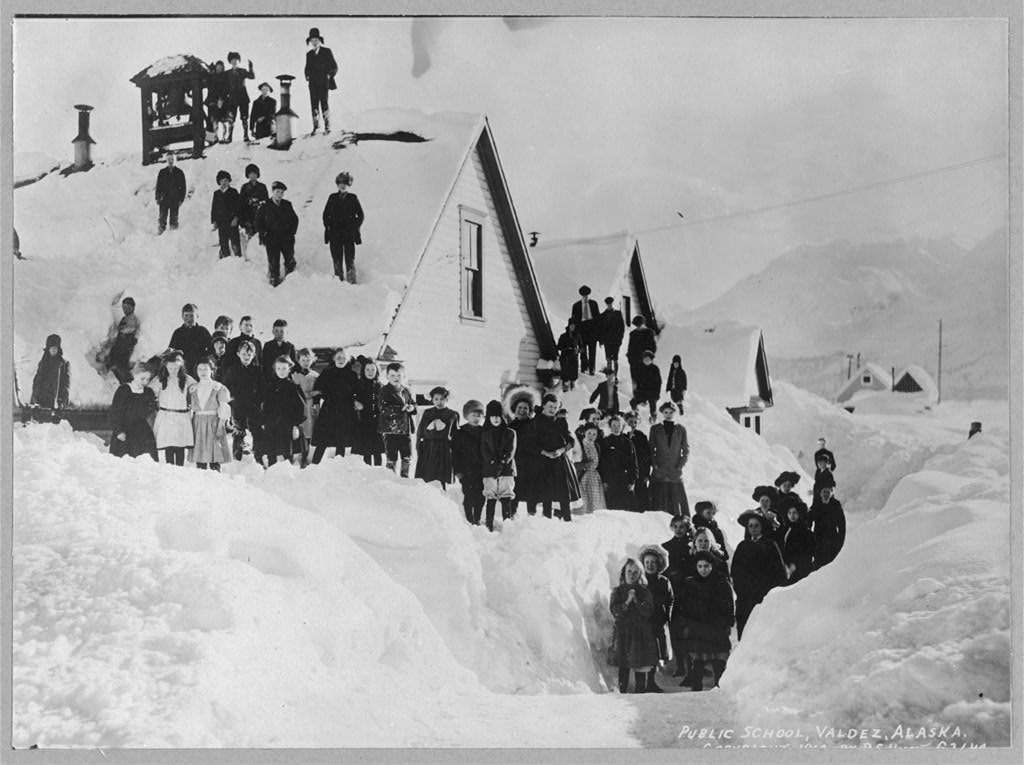
78″ in 24-hours – Thompson Pass, AK
In 1963, that same area saw 78 inches fall in one 24 hour period. At this point, Alaska, Colorado and possibly Buffalo, New York are all claiming to have set the 24-hour record. Some Buffalonians are still digging out from the recent freak lake effect storm which occurred on November 19, 2014. What do you do with almost 7 feet of snow in Buffalo?
Fun Fact: Massive snowfalls are not only found in the mountains of the Pacific Northwest. The coastal town of Valdez, AK sees an average of 320″, and that is at sea level. In terms of sea level snow records, Valdez appears to beat everyone out, even the Japanese seaport of Tsukayama which recorded 68.2″ of snow in a 24-hour period. Imagine the effort it takes to keep roads open at times like this, not to mention the overtime pay the snowplow drivers are pulling in.
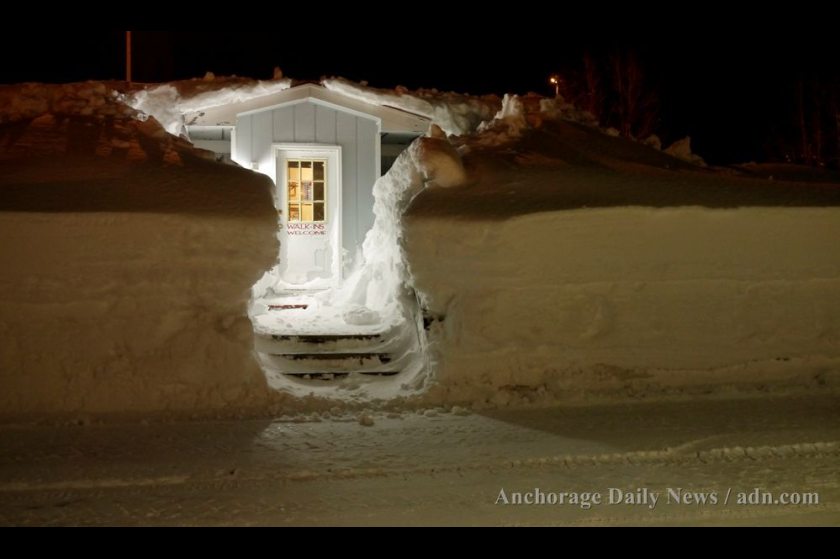
76″ in 24-hours / 95″ in 32-hours – Silver Lake, Colorado
The Sierra Nevada and the Rockies have had their share of “Big Dumps” to be sure. Silver Lake, Colorado saw 76″ of snow in a 24 hour period. But the storm did not stop after 24 hours. When it all ended 32.5 hours later, 95 inches lay on the ground. That is an average of 2.9 inches an hour.
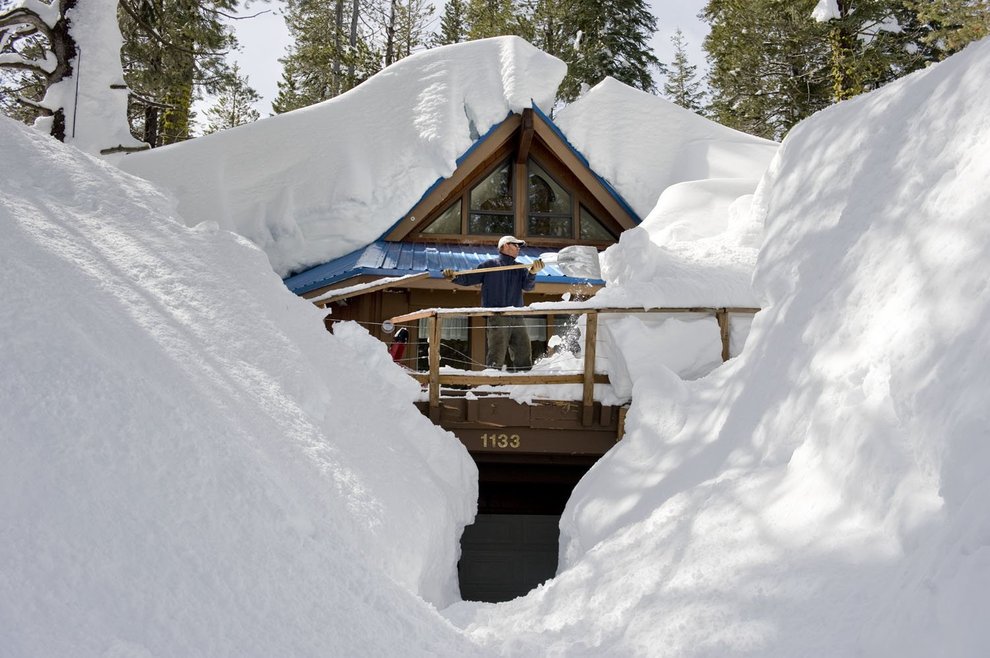
67″ in 24-hours – Donner Summit, CA
In the Sierra Nevada of California, known for big storms that roll in off of the Pacific, 67 inches of snow fell on January 4, 1982. A single storm snowfall, also in 1982, dropped 186.6 inches on Donner Summit. In fact, Donner Pass has topped 775 inches of snow on four separate occasions. Making it one of the snowiest places in North America.
Top 10 Snowiest Locations in the U.S.A. by Annual Average Snowfall (various periods of record):
- 680” Paradise Rainier Ranger Station, Washington
- 552” Thompson Pass, Alaska
- 530” Mt. Baker Lodge, Washington
- 530” Crater Lake, Oregon
- 516” Alta, Utah
- 471” Soda Springs, California
- 445” Tamarack, California
- 442” Stampede Pass, Washington
- 436” Wolf Creek Pass, Colorado
- 429” Silver Lake, Brighton, Utah

Japan
If you saw the Sweetgrass film, Signatures, or Japan: A Skiers Journey, then you know about the endless powder runs that this island nation has to offer. It only makes sense that a group of islands in the northern Pacific would have the highest yearly snowfalls. The largest annual snow depths in the world have been recorded on the island of Honshu.
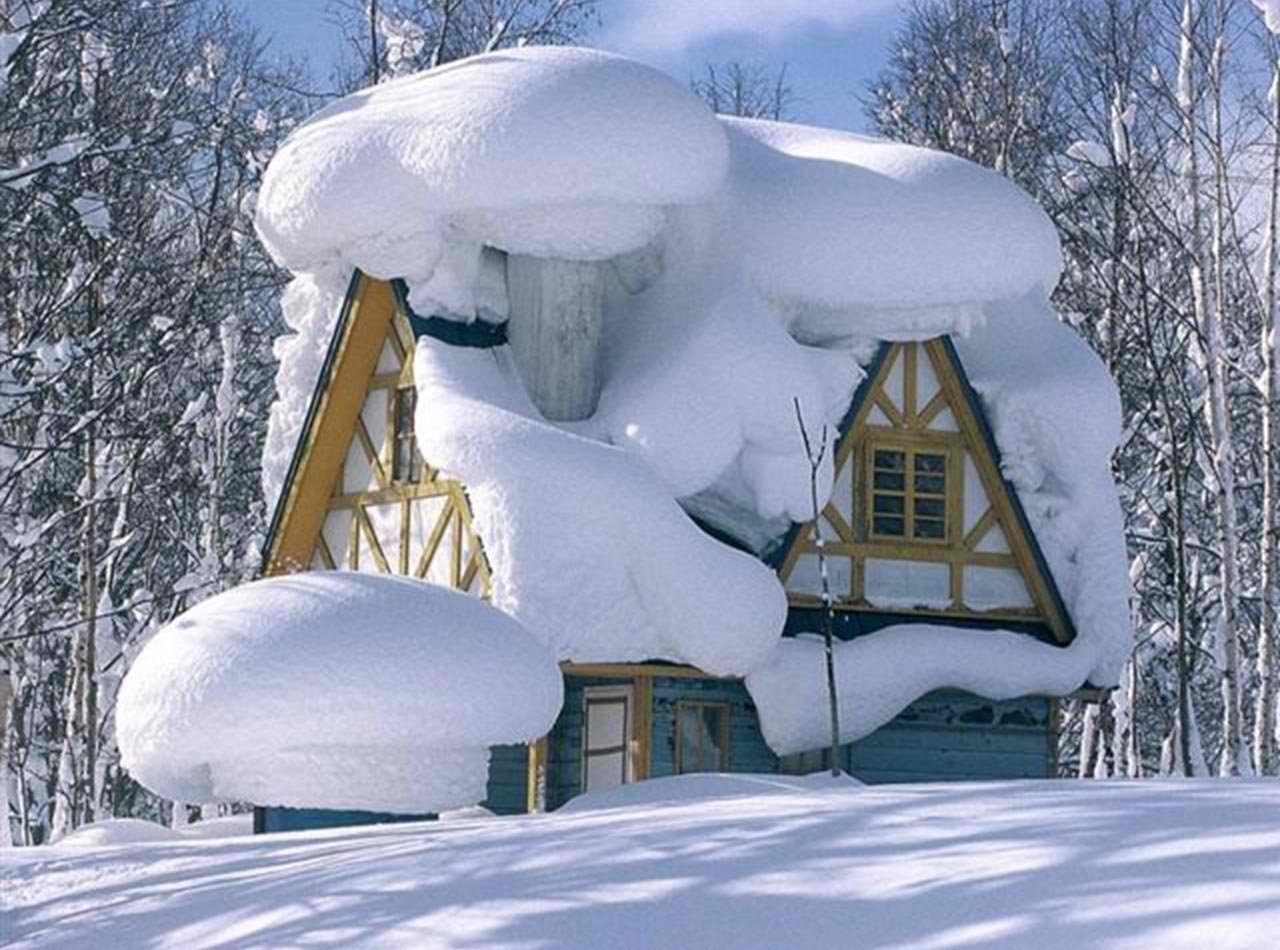
1,200 to 1,500″ average annual snowfall – Japanese Alps of Honshu Island
Impressive as the depths recorded in North America might seem, the deepest snow on earth accumulates in the Japanese Alps of Honshu Island around the 2,000-6,000 foot level. The average annual snowfall is estimated to be in the 1,200 to 1,500 inches range. This would leave only the last 55 feet of the Leaning Tower of Pisa in the clear. On February 14, 1927, a snow depth of 465.4 inches was measured on Mt. Ibuki at 5,000 feet elevation. In fact, these amazing snow depths are a singular tourist attraction. A highway that transects the mountains is kept open all winter. It is known as the Yuki-no-Otani Snow Canyon.
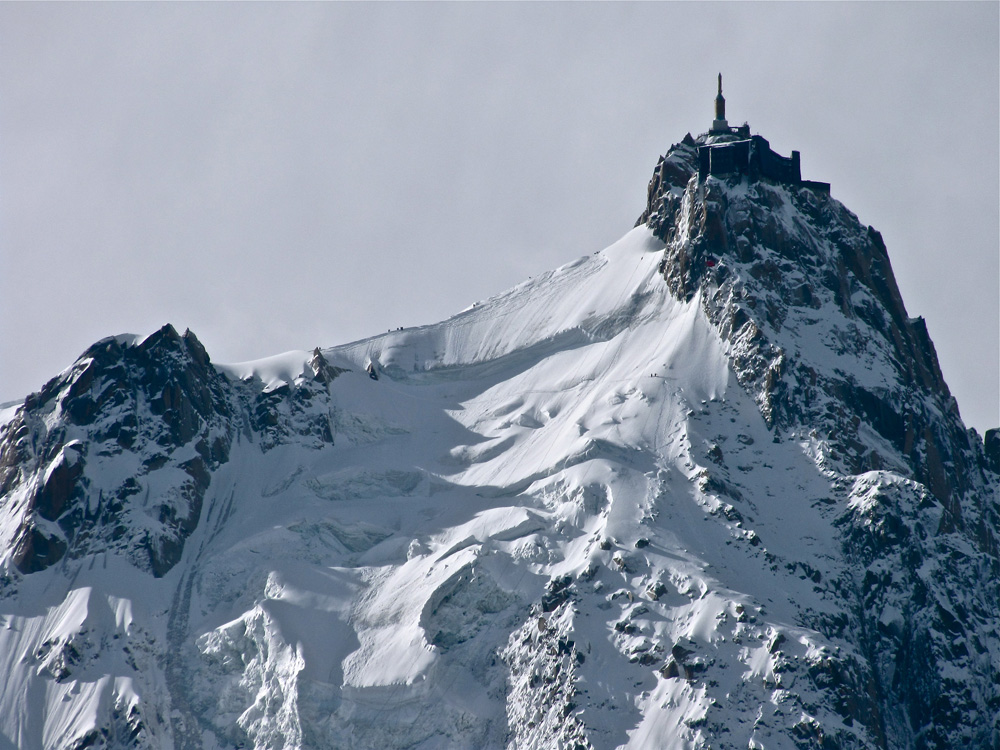
Europe
67.8″ in 19-hours – Bessans, French Alps
In checking major snowfalls in Europe, there was no lack of nationalism. It seems everyone wanted to point out that their country had more snow than any other. Norway and Sweden seem to lead the pack. The European Alps are no stranger to immense snow events either. A record snowfall of 67.8 inches occurred in Bessans in the French Alps during a 19 hour period between April 5-6, 1959. This amounts to an average of a little more than 3.5 inches an hour. Wow!

The Western Great Caucus Mountains of Russia near Turkey and the Black Sea also see amazingly high amounts of snow. Achishko (elevation 6,200’) has measured snow depths as high as 315 inches.
As skiers and riders, we live for these big snow days. We do snow dances, we burn skis, we put our trail maps in the freezer, all in the hope of one of these once-in-a-lifetime events. So let’s hope this year proves to be record-breaking.

Give your sources then, blabber mouth.
hi peoples
Hey back to you too!
When this pandemic business is all over. Can you guys stay on your side of the border and we’ll do the same. We don’t like to share powder in BC, just with friends.
Um okay eh. Like take off, that wasn’t very nice eh! But we can stay put, thanks for being so welcoming and caring you hoser……eh.
Well we all know that it snowed more when our dads were kids. My dad would tell me of all the times that they would have to climb out their second-story window to go outside because the whole first floor of the house was buried under snow and you couldn’t open the door.
Great job and congrats to everyone out there.
Keep shovelin!
xx
this is just insane today at my house the snow is higher than 60 feet tall
I had no idea they shipped it out on railcars. I know in CT they were dumping it in the river and then everyone complained it was polluting the rivers from all the road debris.
My uncle and aunt showed me photos in the 70s of them shoveling down to get to the roof of their cabin in the Sierras. That’s some serious snowfall!
Really good website, but I really wish there was an option to either see “Annually” and “One Day”
wkrghlighfrfghrfhg
Thanks for the great article and fabulous pictures! I live about 70 miles from Mt Baker and it was spectacular today… lots of new snow. I don’t know what this years total is to-date but I’m sure there is a lot, It was beautiful today.
Happy New Year!
Actually Irwin Lake ,Colorado has the largest recorded snowfall in the 83/84 year. 200 inches in 24 hours ,1500 inches for the year.It snowed for 40 days and 40 nights.Lots of snow.
Lol Mark Mikos?!
xxxxxxxxxxxxxxxxxxxxxxxxxxxxxxxxxxxxxxxxxxxxxxxxxxxxxxxxxxxxxxxxxxxxxxxxxxxxxxxxxxxxxxxxxxxxxxxxxxxxxxxxxxxxxxxxxxxxxxxxxxxxxxxxxxxxxxxxxxxxxxxxxxxxxxxxxxxxxxxxxxxxxxxxxxxxxxxxxxxxxxxxxxxxxxxx
snow snow snow snow snow !!!!!!!!!!!!!!!!!!!!!!!!!!!!!!!!!!!! 140 feet snow wow is that a lot for me
Mammoth Lakes/Mammoth Mt. with 8 feet on New Years day in 2007 or 08 from midnight to midnight. I blew up the motor on my Bobcat 863/snow blower on driveway # 12 out of 65. I had to finish up the next 8-10 days with my old worn out 1845 Case skid steer with a bucket,,,,,
Cool article. Lots of places in the US that list that average over 429″/ year missing from that list though…
Some off the top of my head (but not limited to)…
Alyeska, Snoqualmie, Mt Bailey, Sugar Bowl, Timberline, Snowbird, Brighton, Grand Targhee, Solitude, Crystal, Stevens Pass, Jackson Hole, Eagle Point, Squaw, Hoodoo, Powder Mtn, Mt Hood, Willamette Pass, Kirkwood
Just want to point out that Stevens Pass, WA, averages 455″ per year, with a 68 year period of record. Putting us at #7 on your list of snowiest places in North America. 🙂
Your all wrong kinda.
A researcher came up with this recently. .Creedible and well investigated. It’s long write up and occured just north of Thompson Pass, AK. For those who know the area it’s near Rendevous Lodge.
https://www.wunderground.com/blog/weatherhistorian/comment.html?entrynum=315
Nope, you just need to read the article more carefully. The record at Silver Lake still stands. The AK “record” is not official.
Helping to solidify my decision to move to San Francisco 🙂
I could put up with a heck of a lot of snow before I’d move San Francisco.
Cool go !!!!!
Cool go !!!!! Good by Ribbecca back to the bay
love this! we live in OR not far from Mt. Rainier etc and love to see these vicariously. Great article topic and loved the pix and charts
I lived in Buffalo for 9 and experienced the Blizzard of ’77. I remember being able to see out the first floor window.
“What do you do with almost 7 feet of snow in Buffalo?”
They put it in rail cars and move it south
My husband has had to work round the clock snow duty on the tracks there. Sweeping snow off switches with brooms, loading it in cars with a crane
no one cares
I care.
No one cares that you care
I care, too.
O hi person i don’k care about you caring
EEEEEEE
I CARE
I care, too. I’m surprised they don’t just dump it in to Lake Erie. I watched a special about the 1977 Buffalo blizzard, that was incredible.
Living in NJ with almost no snow this year. It sucks.
I care omg